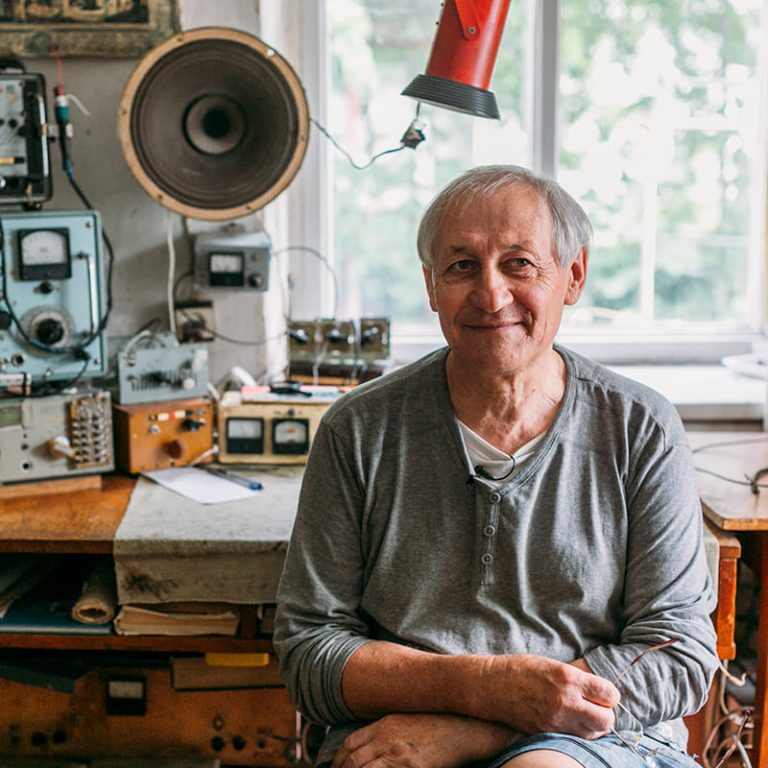Despite the proliferation of social networks, the Facebook of the 60’s amateur radio still exists. This “social network” was admired all over the world in the second half of the twentieth century, but there are still thousands of people who keep in touch by communicating with simple radio waves. This story is about two amateur radio enthusiasts from Svitlovodsk.
Radio Amateurs are people who are passionate about radio communication. At home they construct special devices to communicate with colleagues from distant countries, participate in radio expeditions and radio sports competitions. This phenomenon spread throughout the USSR in the mid-twentieth century, captivating people from different generations.
Thanks to their hobby, radio amateurs had the opportunity to receive various information before the Internet expansion to discover news and to communicate with foreigners. In the 50’s in Ukraine this activity became so popular that people spared no expense to improve their equipment and gain new knowledge.

The first Ukrainian who conducted radio communications experiments (in the Russian Empire at that time) was Serhii Zhydkovskyi from Zhmerynka, Vinnytsia region. In 1912, Serhii designed a radio station that allowed radio exchanges within two miles, but eventually Serhii was arrested on suspicion of espionage.
Most radio amateurs live in the USA: according to data in 2019, there are over 700,000 people dabbling with amateur radio. In second place is Japan: as of 2015, there are over 400,000 people enjoying the hobby. According to the data in the early 2000s, there are over 17,000 shortwave-radio enthusiasts living in Ukraine.

Leonid Pasko has been interested in amateur radio communication for over a half of a century. At home, in Svitlovodsk, in the Dnipro Ukraine, he communicates with Ukrainian and foreign colleagues through a home radio station.
— The purpose may be different. Some people find it interesting to get in touch with different countries and to make that connection. Others just like to construct devices that reach thousands of kilometers. Others take part in competitions that are held almost every week in different countries.
The development of electronic devices and communications in the territory of the former Soviet Union was progressing gradually. Leonid tells how radio access in Ukraine was born:
— After the war, I went to school and we had no lighting. In the late 1950’s, large scale economic reforms were carried out New power plants were constructed and electricty cables reached further, lighting and the ability to have lighting and communication was now available. State programs began, people could buy motorcycles, cars and receivers (until then, they weren’t available). Until 1954-56, if you had a radio, you had to register it with the government and be a registered user.

Soviet YouTube or SoundCloud
“Baltika” is Leonid’s favorite radio. It was a Latvian development, which was made in 1954-57 according to German post-war schemes at a plant in Riga.
Amateur radio was a common hobby of the teens of that time. From 1930 to 1941 a monthly scientific and technical journal “Radio” was published in the Ukrainian Soviet Socialists Republic, where designs, blueprints and diagrams were published, which then amateurs would exchange (such a magazine has been published in the USSR since 1924). Young people who had homemade tape recorders could broadcast music.
— The popular music of that time — “The Queen of Beauty” by Muslim Magomayev or “Girl” by The Beatles – could spread from Moscow throughout the Soviet Union in one day until 1968. There were groups of young technicians all over the Union; every student could buy the simplest radio transmitter with their savings. Everyone learned to solder. This increased the level of technical education of young people. This process continued until the beginning of the Prague Spring, when the Czechs used short waves during the uprising.
In 1968, a series of protests against Soviet influence, known as the Prague Spring, took place in the Czech Republic, amateur radio enthusiasts also participated in these events. In order to prevent such resistance in the USSR, the Communist Party decided to destroy this movement, which was reborn only in 1971.
In order to become an amateur broadcaster and obtain a license under soviet rule, amateurs were required to be tested for 2 years It was checked whether the candidate knew the machinery, whether he/she had connections abroad, or did not pass military service abroad.
Today, in order to practice radio broadcasting, you also need to have a proper license — a license from the national communications administration. In addition to the license, the administration assigns each participant a call sign, and with these callsigns other enthusiasts can identify each other.

The mechanism of communication transmission
Communication with different countries happens thanks to the radio waves that differ in length. These waves are very long, long, medium, short and ultra-short.
Shortwave frequencies are currently used for radio broadcasting as well as for amateur and professional communication. In the beginning, short wave radio was considered to be impractical, so the whole frequency band was provided to amateur radio enthusiasts for experimentation.
To establish a connection with another country, a radio operator needs a separate antenna. Leonid has several high frequency antennas for communication with distant countries: Australia, Japan, and the USA. He also has two low frequency antennas: one for communication within a radius of 1,000 kilometers, and the other for about 5,000 kilometers.
— Why does amateur radio excite? Amateur radio is very similar to mushroom picking, hunting and more. A broadcaster will sit on the air and wait for an emerging channel of communication, for example, a remote island; then, in that moment, he communicates, receives a QSL-card, and is proud of it.
QSL-card
Written confirmation of the establishment of a radio connection between two amateur radio broadcasters.QSL-cards confirm bilateral radio connection between amateur stations or the receiving a radio signal from a listener. Typical QSL-cards are similar to postcards and can be sent by post or e-mail.

Leonid Pasko explains that speed and quality of radio communication depend on many natural factors. In particular, on the position of the sun during the day, the seasons and other external influences:
— The electromagnetic waves of the sun bombard the air, break into ions and electrons and then form ionized clouds. Here the signal from my station in Svitlovodsk hits the clouds, like a mirror, reflects and hits Tokyo; then I hear them in Japan perfectly.
Amateur radio connection is a kind of a competition: who gets caught by what channel; or will it be a connection to a faraway island or a remote country?

Because Leonid is mainly dealing with short waves, communication occurs periodically. Therefore, it is important to have time to catch the moment of the signal. Leonid explains that different layers of the ionosphere have different effects on the spreading of signal in the short wavelength frequencies:
— There is a layer D, an absorption layer for radio waves. This layer does not pass the signal, but on the contrary, absorbs it. For example for us to reach the UK, we need to avoid absorption of layer D and get to the reflective layer E.
If the broadcaster does not have a computer program that controls the emergence of communication signals, he remains constantly alert and has to monitor the air on his own.
— Sometimes signals are coming from Japan, signals may come from the East, or from the West. Different paths of passage, well, that’s a whole science.

Leonid
It’s easy to find Leonid’s house in Svitlovodsk: huge rooftop antennas are visible from afar. He designed the first receiver when he was in 8th grade, at that time amateur radio was still kind of a subculture.
— I was born during the reign of Stalin, and went to school when another era began: Stalinism was criticized, certain freedoms appeared. The voices of children began to travel on the airwaves in schools. Young people were drawn to new knowledge that was previously forbidden. Music like the The Beatles or The Rolling Stones was forbidden but they could not be banned on shortwave frequencies.

Leonid became involved in broadcasting thanks to his neighbor, who had a radio at home.
— One day my neighbor showed that in a normal speaker hanging on the wall, you can switch on the pickup, switch to the microphone – and it speaks. It was a real shock. And when he showed that you could attach three wires and talk to your classmates. The disease had already started spreading the amateur radio disease. There were probably nine boys in our class, of them, seven got into amateur radio.
After Leonid graduated from the History Faculty in Dnipro (formerly Dnipropetrovsk. — ed.), Leonid repaired nuclear submarines at the Far East Factory “Star”. He served in the navy in Sevastopol, in Crimea. According to Leonid, there was a constant shortage of radio operators in the navy. Thus, the signalman traveled the Mediterranean and Black Seas, Bulgaria, Georgia, Syria, Algeria, Egypt and Guinea.
When the USSR was headed by Joseph Stalin, it was not easy for amateur broadcasters — they were subjected to oppression and repression. The connection was controlled by the authorities and the owner of an unregistered radio transmitter was considered a spy. The situation has changed somewhat after Mykyta Khrushchov took the reins:
— Khrushchov’s period was a good time, but parents were still living in fear. One day I came home, looked – my “Baltika” was gone. I went out and saw that the remains of my radio were burning in the garden. My father worked all the time in the fields and did not know about my hobby. When he found out and understood what I was doing his immediate reflex was to burn my radio. Then, out of sin, he tore the receiver apart and burned it.
If the unfortunate situation with the burned radio didn’t happen, the amateur radio might not have grown into a long-lasting hobby, says Leonid:
— If my father did not burn it, I would probably be fed up with this radio and forgotten about it, but what is forbidden is desirable. This hobby has developed into such a “disease” for life. Well, the radio helped, it always helped.


Around the fascination with amateur radio a whole community has formed, in every city radio fans can find each other by seeing their antennas.
— If I go somewhere and see a stretched antenna, I go to this person. I know this is a fellow hobbyist.
There is also a connection with Russia controlled by regulations. Religious and political issues are not discussed in this case. Communication with Russians depends on latitudes:
— It is clear that an information war exists, but of course, we communicate as we used to communicate. You saw how they interacted with Belgorod, they sympathize. Especially these places deep in Russia — Tambov, Nizhnyi Novgorod — well, in general, they are warm in communication. Here, closer to us — Krasnodar, Belgorod, Voronezh — in fact, there are Ukrainians who have forgotten their language and have broken away.

“Plast”
In Svitlovodsk, Leonid Pasko taught history at a school for many years. The teacher recalls how in 1995 he learned about “Plast”, a national scouting organization in Ukraine that takes care of youth education. At the first “Plast” camp the man visited in the town of Bolekhiv in Ivano-Frankivsk region, which is in the foothills of the Ukrainian Carpathians. Since then he has been actively developing “Plast” in Svitlovodsk. For him, this movement is a perfectly developed system of human education.
— School is probably 10% of what “Plast” can give a child. The children who passed “Plast” in Svitlovodsk, created stable families, completed their studies and are successful in life. They did not create problems for either their parents or the state. They don’t need help from anybody, they can help others themselves.
With “Plast” the head develops local history trails, takes children to the mountains, arranges overnight stays by the sea, organizes bicycle, literary-educational and archeological camps. Thus, the Svitlovodsk’s “Plast” cell also visited the prominent Cossack places of Naddniprianshchyna: in the residence of the Hetmans in Chyhyryn, the native village of Bohdan Khmelnytsky Subotov, on the tomb of ataman Ivan Sirko in Nikopol.
You can love Ukraine through its knowledge, says Leonid. In order for the children to explore their country and feel involved in it, he began organizing hikes:
— To make a child a patriot, you should take him/her to the mountains, let a child walk through a spruce forest. Give him/her a chance to pick blueberries, cherries, strawberries, give them contact with the land, where a child lives. Introduce them to the heritage of the people of this country. Give them quality music, literature, and movies. Do not just tell a child about Ukraine. They already live here — it’s in their body, in their blood.

Photo by: Leonid Pasko.
For hiking in the mountains, Leonid even constructed a special device for receiving and transmitting signals — the transceiver. This relatively small device allows amateur radio broadcasters to work in the field.
The man combines the management of the local “Plast” with the classes of the radio club. Working as a teacher-organizer since the 1980’s, he teaches pupils electronics and tries to find an approach to each student.
— Children are more interested in constructing, as they no longer need to communicate on the radio. Most kids who come to classes, starting from the third grade, can hold a soldering iron in their hands. All the boys who were at my classes can both construct and work on the radio.

Photo from Leonid’s archives.
Leonid inspires his students with his hobby in the classes:
— To change the world is to dedicate your work to this world, that is, to feel that the days are not in vain. It is to fulfill your duties to the family, to the community, and to help children if possible. I could work as an equipment controller at a radio factory for 200 hryvnias, but I left this and opened my classes for 90 hryvnias.
Every year the students of the classes take part in an event called Jamboree On The Air (JOTA) organized by an international scout organization. These are alternative scout meetings occur every third weekend of October. JOTA was started in the 1950’s by English “Plast” amateur radio enthusiast, Leslie Mitchell. Communicating with the help of shortwave stations, jamboree participants exchange experiences and get acquainted with the world of electronics. Simultaneously, Jamboree on the radio waves takes place at the same time as Jamboree on the Internet (JOTI).
— These are meetings of scouts from all over the world. Not necessarily on the air, it could be Skype, Twitter, anything else… It is an international meeting where children share their impressions of the past year: where they were, where they traveled, and who they met.
Leonid thinks that in recent years the local “Plast” is losing popularity.
— When we started, organizing a children’s holiday was a headache for parents. Even with modest means, could give the children organized leisure. Now parents can go with their child to Greece, Turkey, or take their kids somewhere else. Earlier, when taking their child to “Plast”, a mother said that scouting was all just wet feet, calluses on the back, sleepless nights, mosquitoes… And now mothers want to take their children somewhere comfortable.
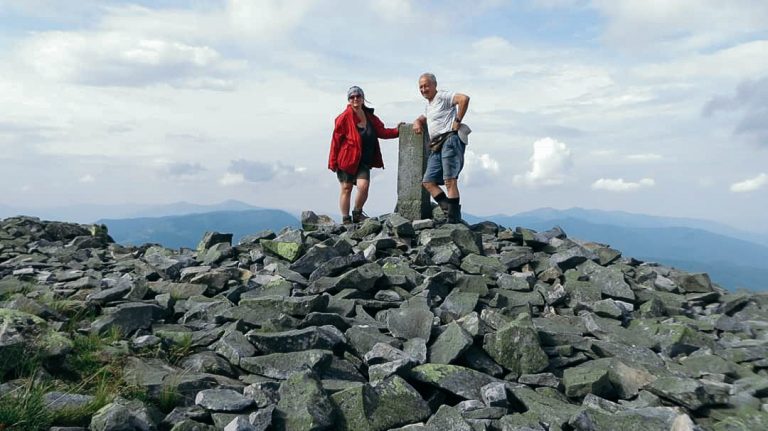
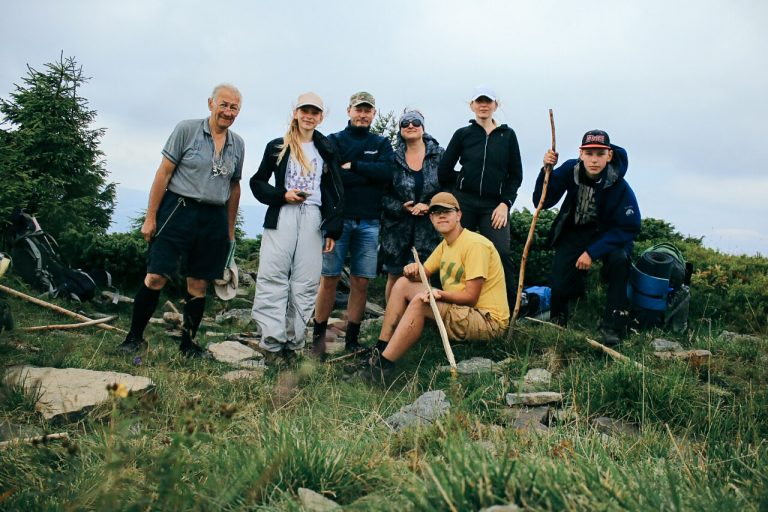
slideshow
Forbidden literature
In Soviet times, Leonid Pasko became involved in samizdat (self-publishing) — a kind of dissident movement that consists in the publishing without censorship, philosophical and socio-political works. Leonid mentions that he used to make great efforts to find such literature to quench his spiritual hunger.
— You couldn’t buy this literature in the store — only in samizdat. See what a tremendous work people have done, now it’s all on sale, people can read.
It was especially difficult to find philosophical and historical literature. At that time, the source of hard-to-reach texts for him was a library in Moscow.
— In order to study the history of my land, I was forced to write copies of the work of the historian Dmitro Yavornytskyi in the Lenin Library in Moscow. Description of the Dnipro, the publication “Zaporizhia in the remnants of antiquity and folk tales”. If you read the history of Ukraine and had a copy of the book by Mykhailo Hrushevskyi, you could be punished at that time.

Leonid has his own collection of samizdat and books which were forbidden in the USSR. At the same time, Leonid became interested in Indian philosophy and traditional medicine. Raising three children, he studied methods of treatments with herbs and yoga poses — asanas. For example, for diseases of the throat he uses the pose of a lion. In the city people have called him “yogi” for a long time.
— Everyone wants what? Space and freedom. The space where a man works. Space and freedom of knowledge were limited.

Hennadii
Leonid Pasko involved his friend and neighbor Hennadii Kravchenko in amateur radio. When Hennadii was 18, he suffered an eye injury whilst working in the mine and since then he has been blind. Leonid worked as a history teacher at the school where Hennadii’s wife, Svitlana, was working as a librarian. She told Leonid that Hennadii has been fond of radio since childhood and has his own “Baltika”.

Despite blindness, Hennadii learns languages and actively communicates with the world through radio. Despite the injury he managed to finish his studies at the Pedagogical Institute. At first, he studied independently using Braille, and later Svitlana began to help her husband to learn languages by reading books aloud.
Working in the mine, Hennadii constructed a radio that could catch a signal at a distance of 190 kilometers. For Hennadii, amateur radio is a basic tool for communicating with the world, requiring the knowledge of many languages. Currently, Svitlana is helping her husband to learn Italian and Arabic. Hennadii has studied German and English,and later plans to study Spanish and French.
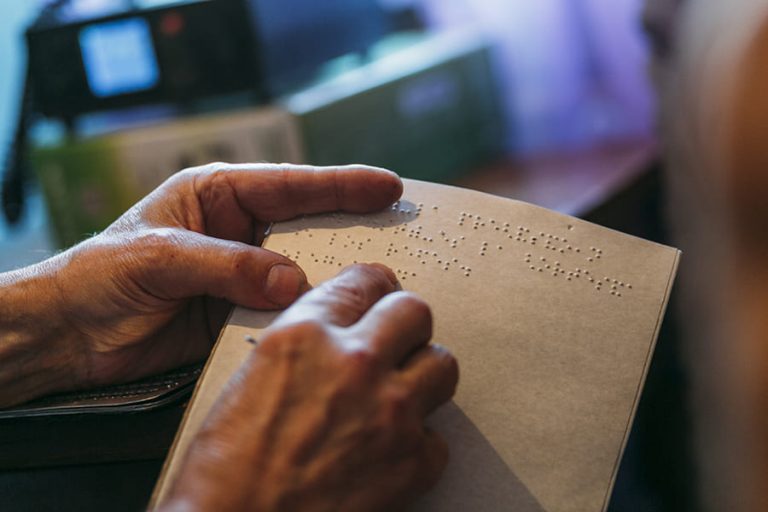
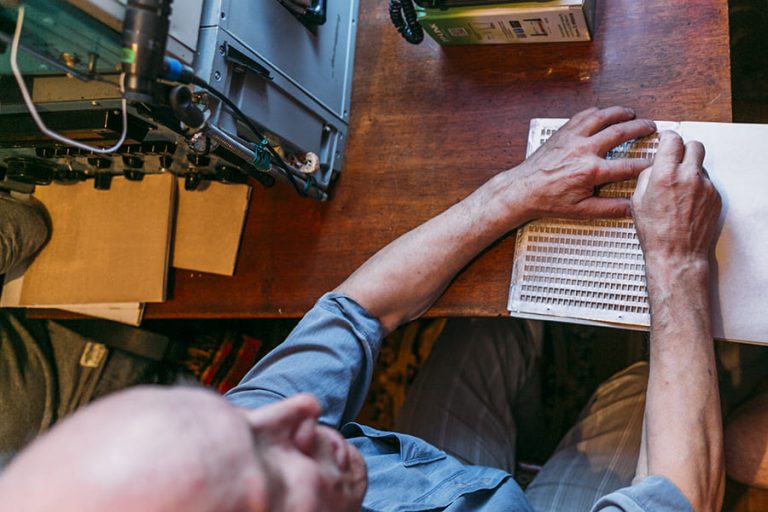
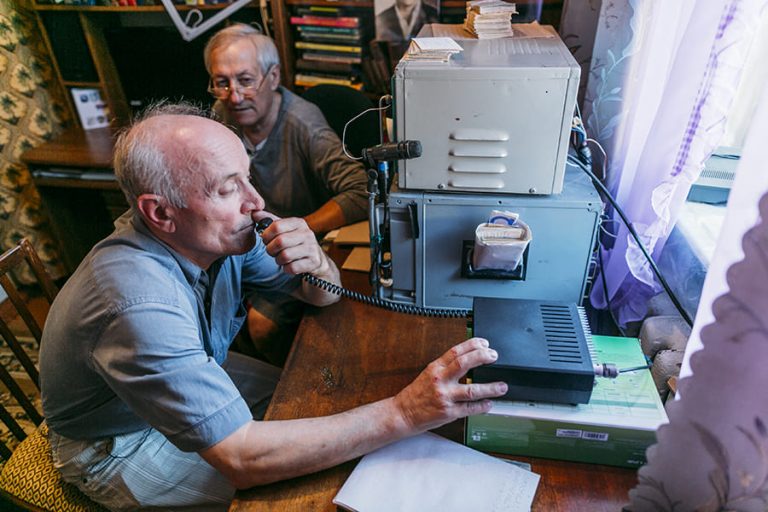
slideshow
With foreigners Hennadii usually speaks in English. He welcomes Japanese friends in Japanese and then continues to communicate with them in English. He also tries to speak to the Italians in their language.
— Basically I like to talk to Italians, I succeed more with them. I know very few Spaniards, there are Germans, especially East Germans understand Russian more and try to improve their own language.
During his years of admiring amateur radio, Hennadii gathered a collection of long-distance connections. Once he managed to catch a connection with the islands near New Zealand for 2-3 minutes. He also managed to connect with Kalimantan Island in Southeast Asia and Australia. It is much less likely to get in touch with broadcasters from North Africa, Monaco, Iraq and Jordan.

